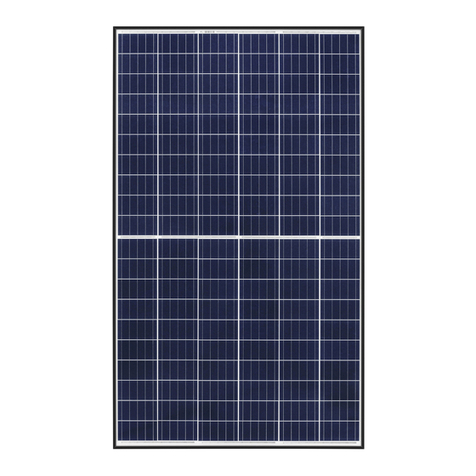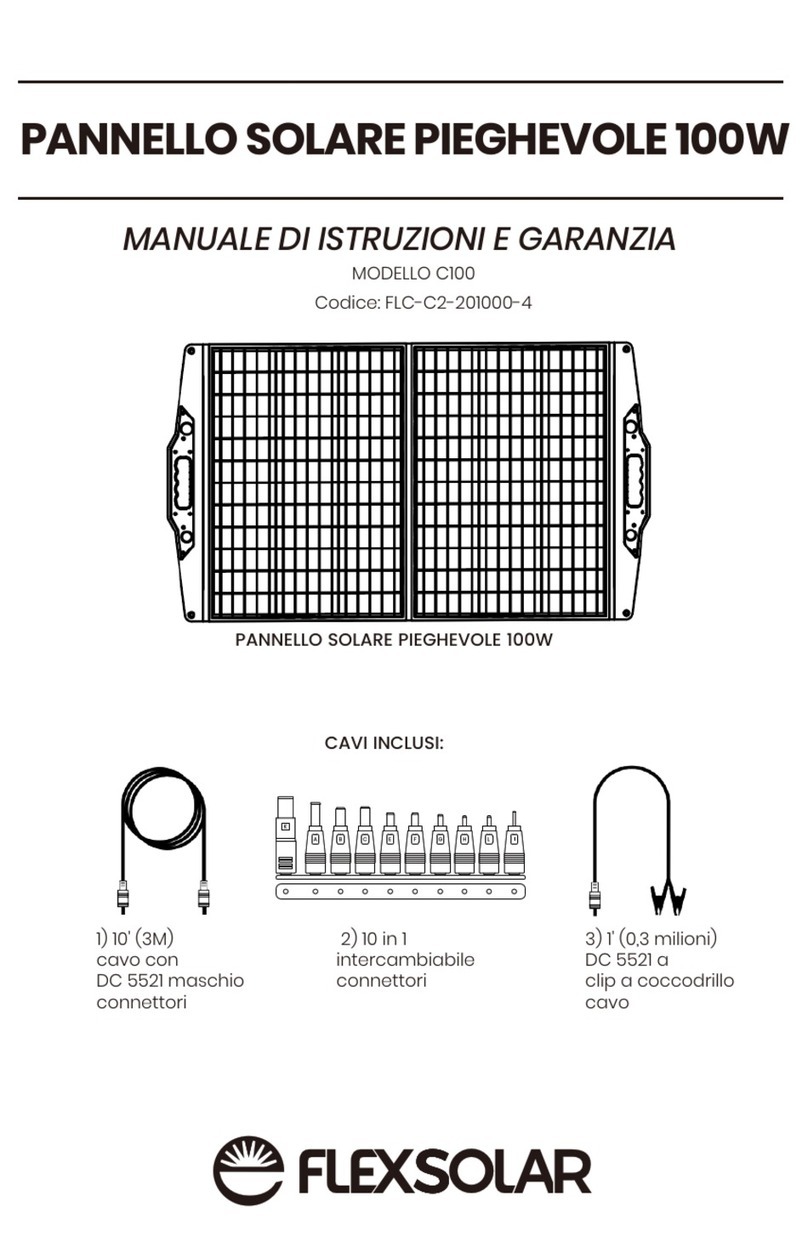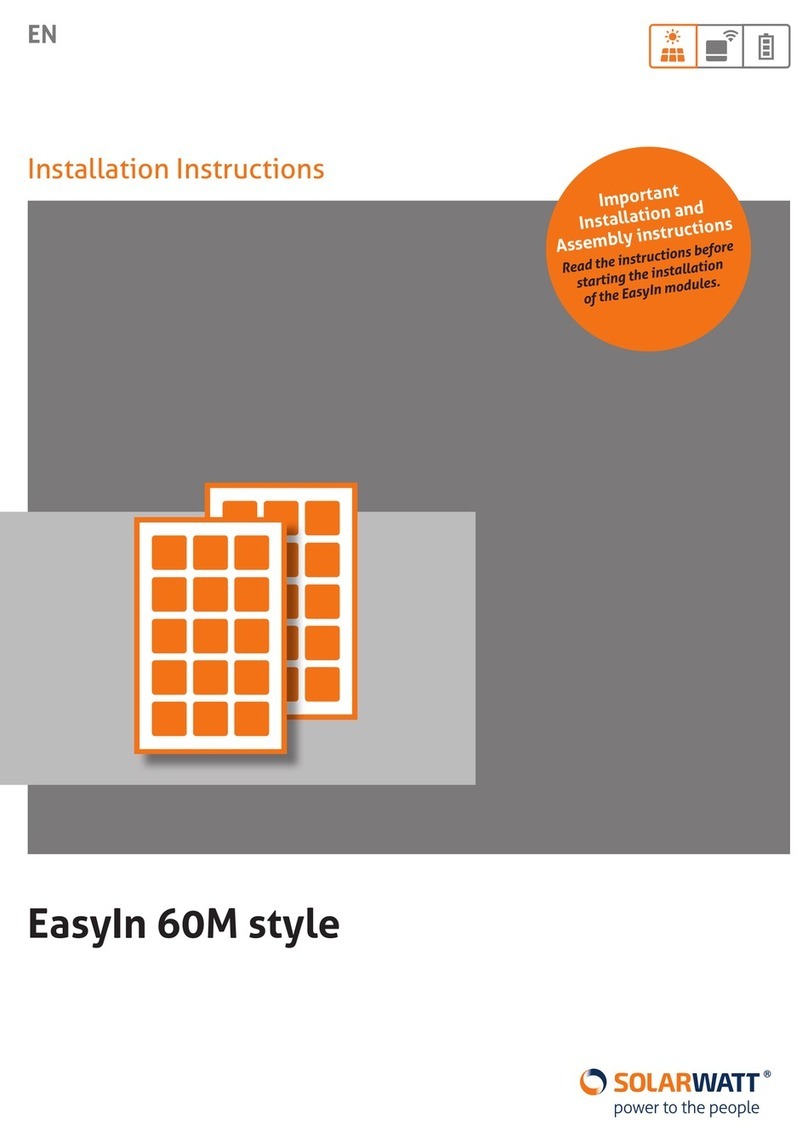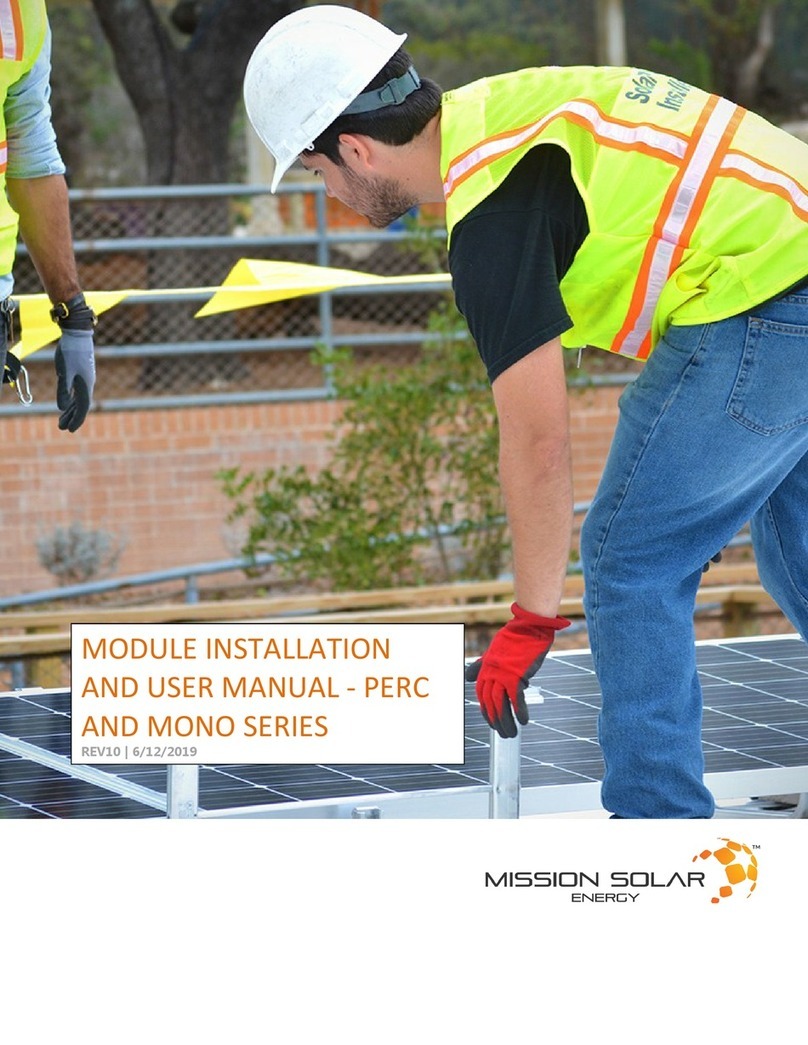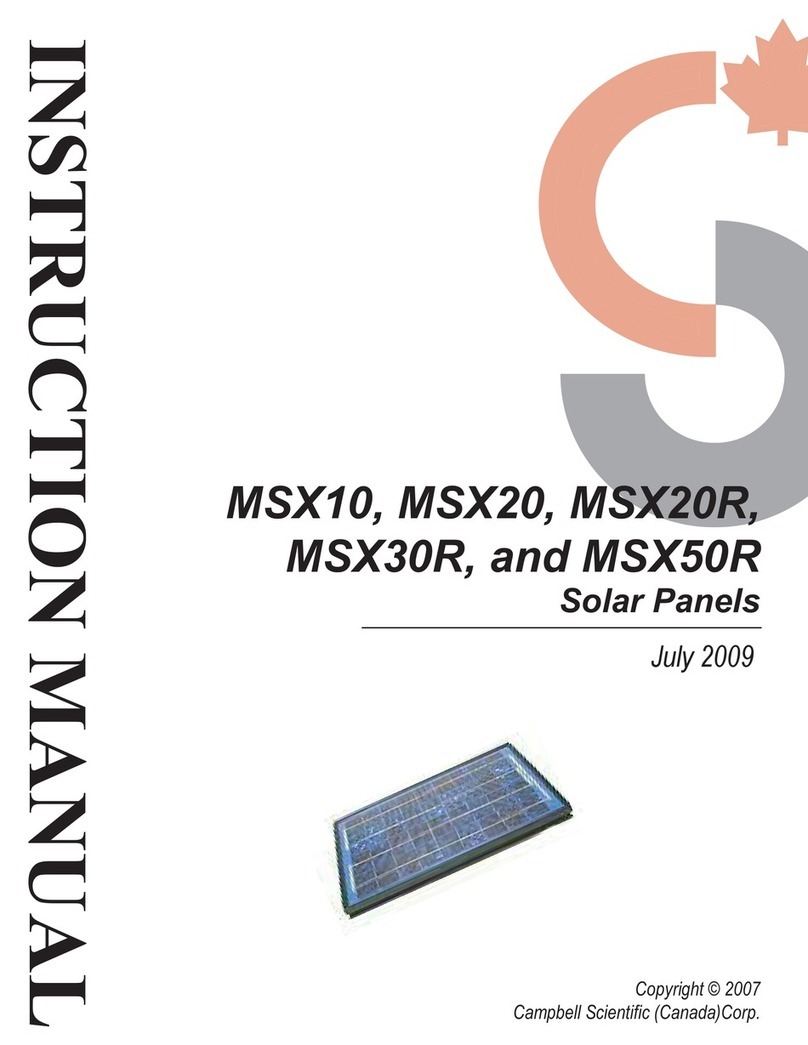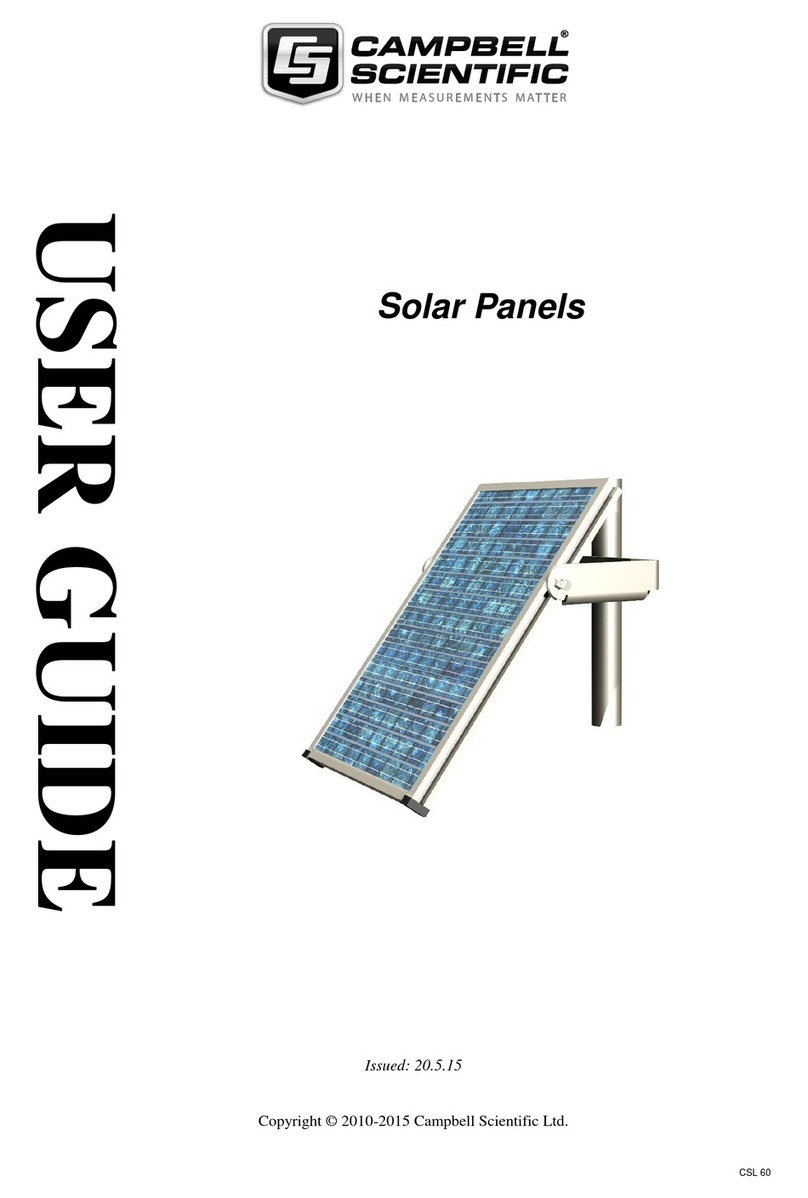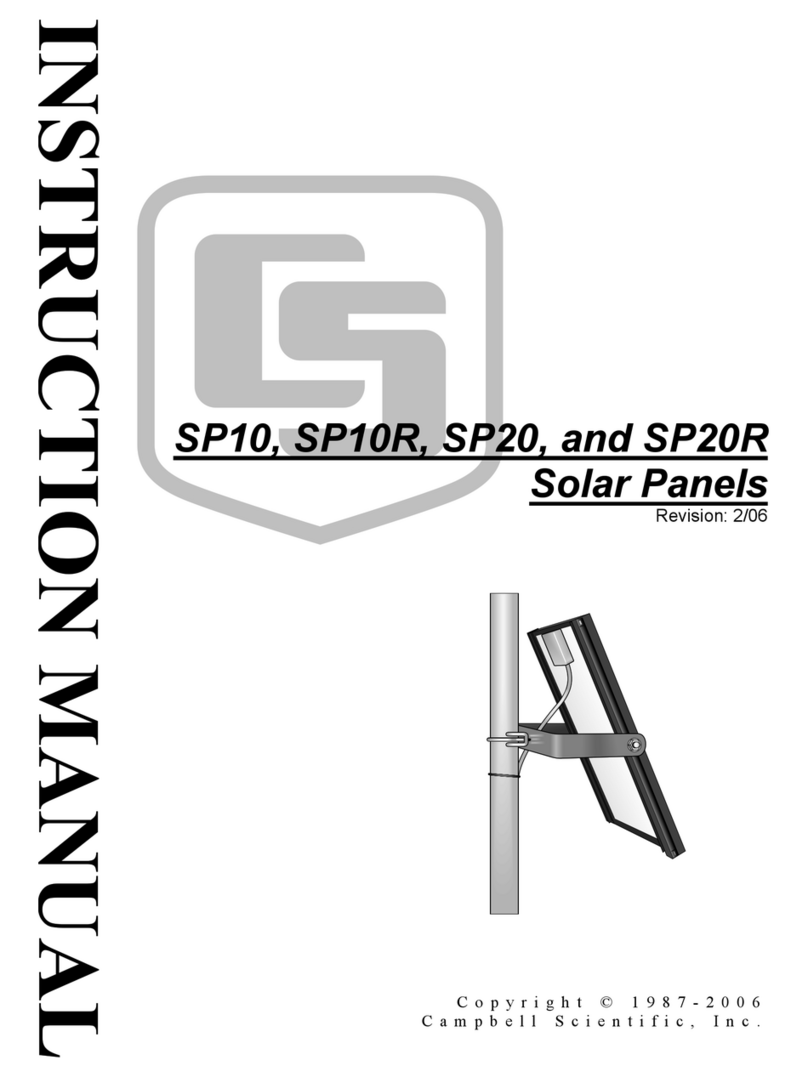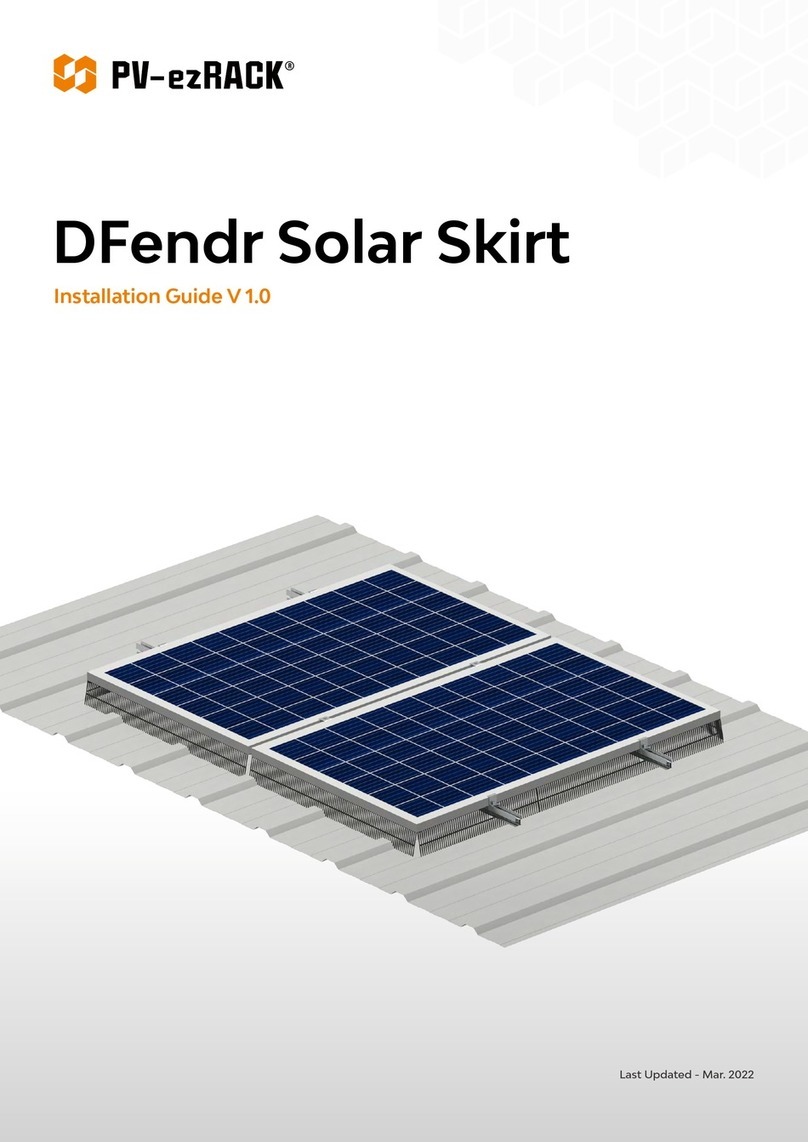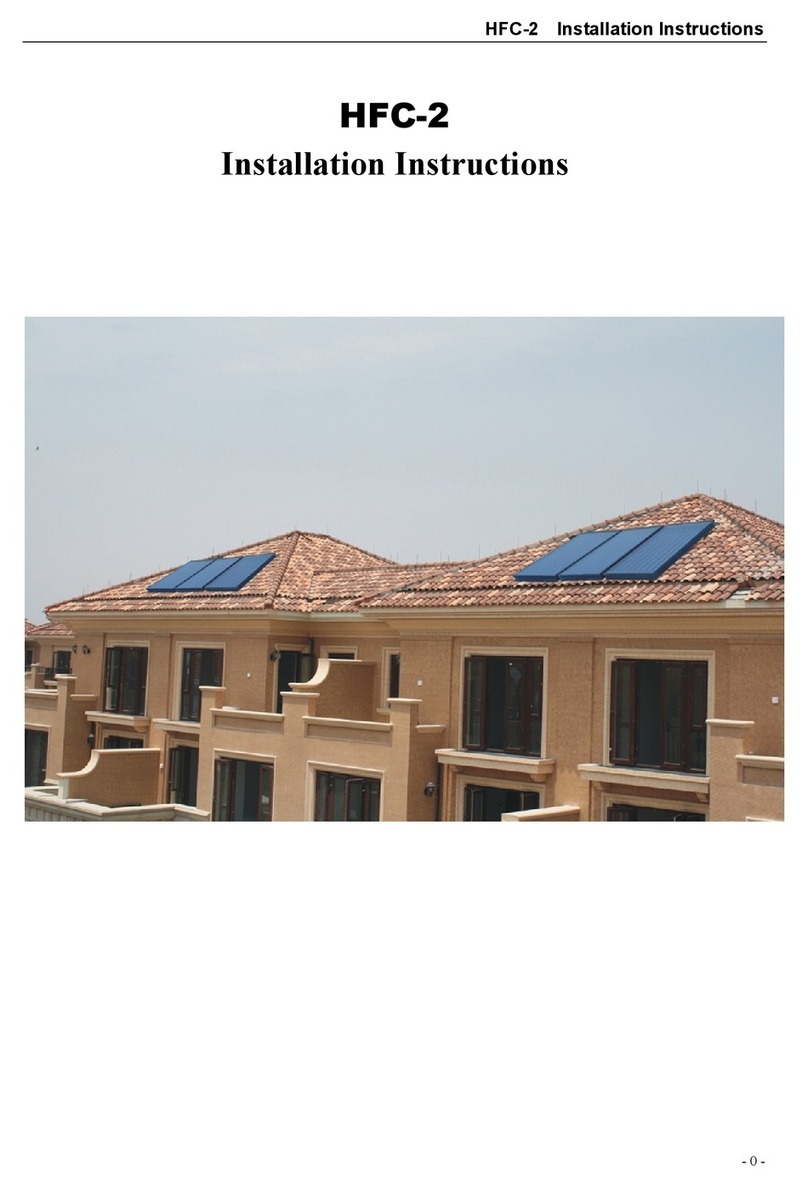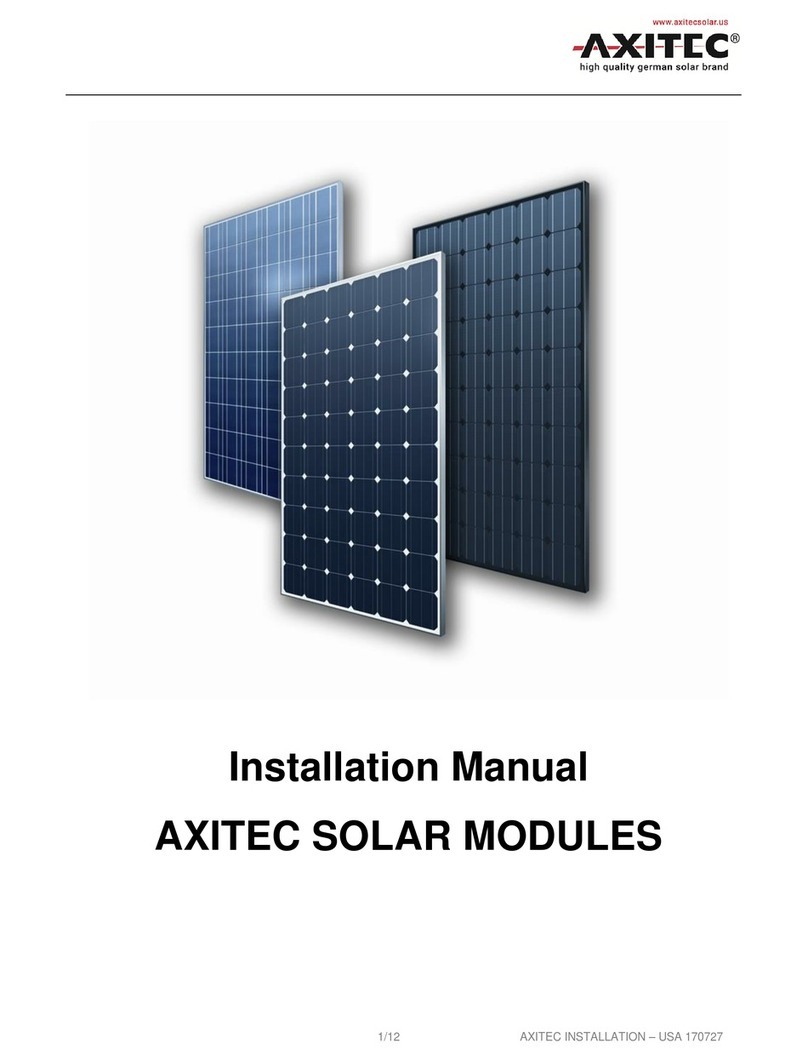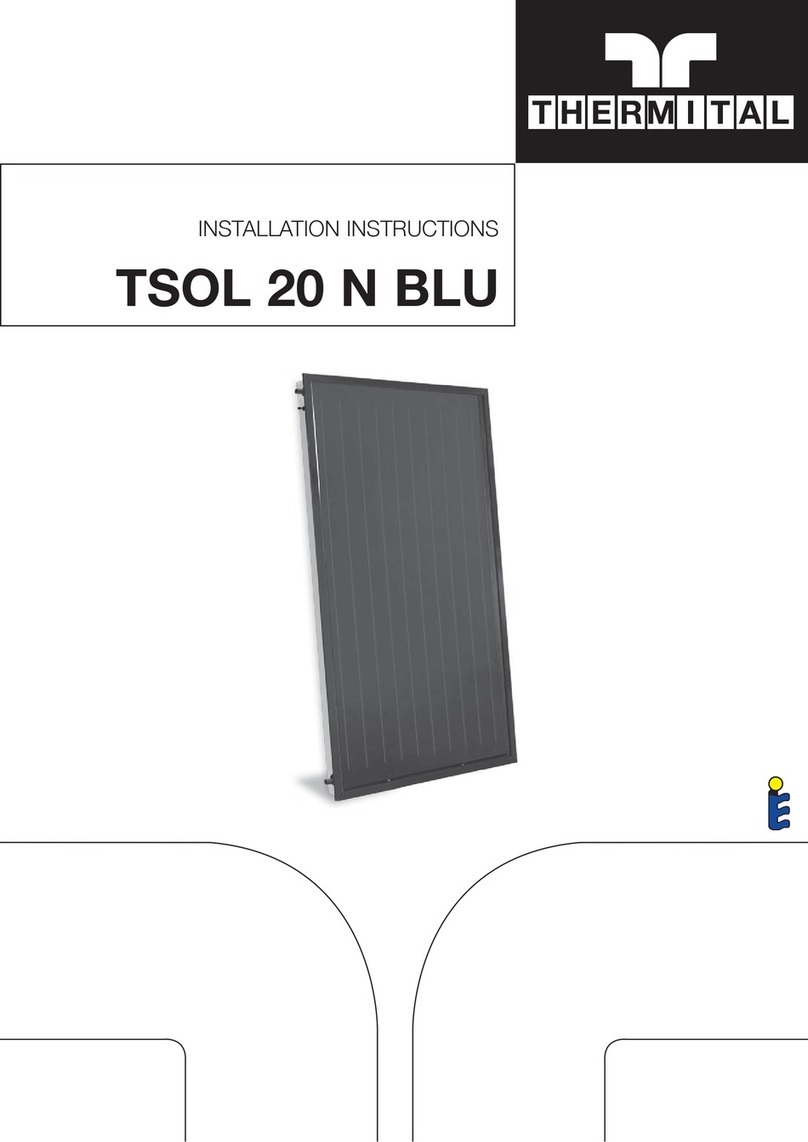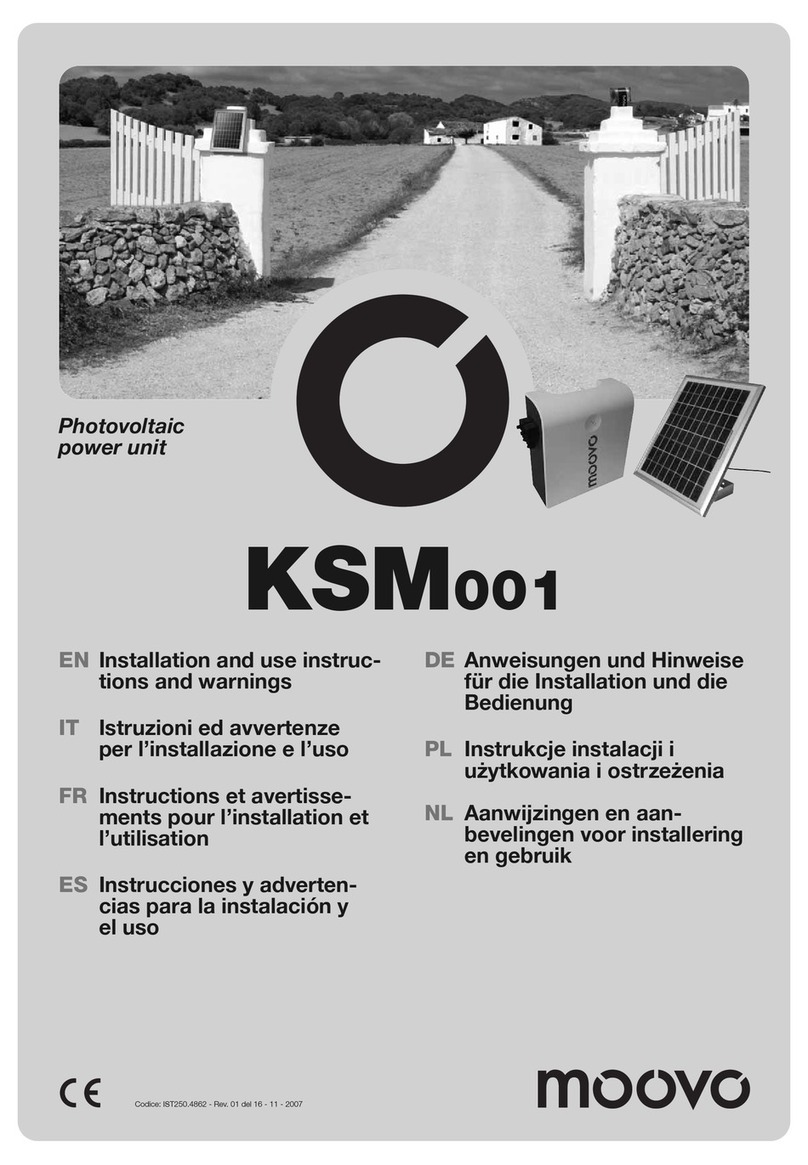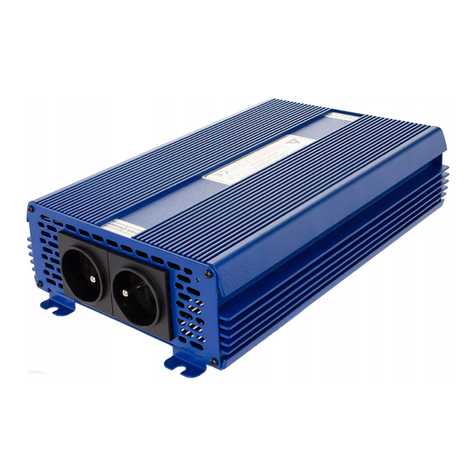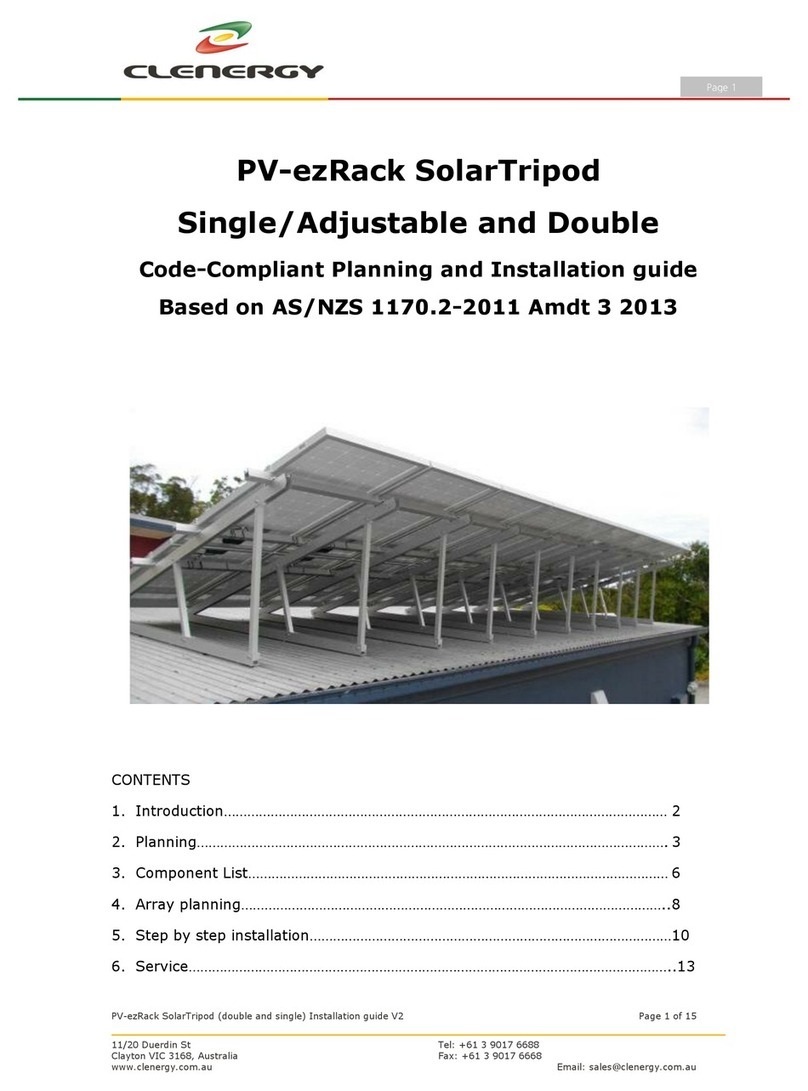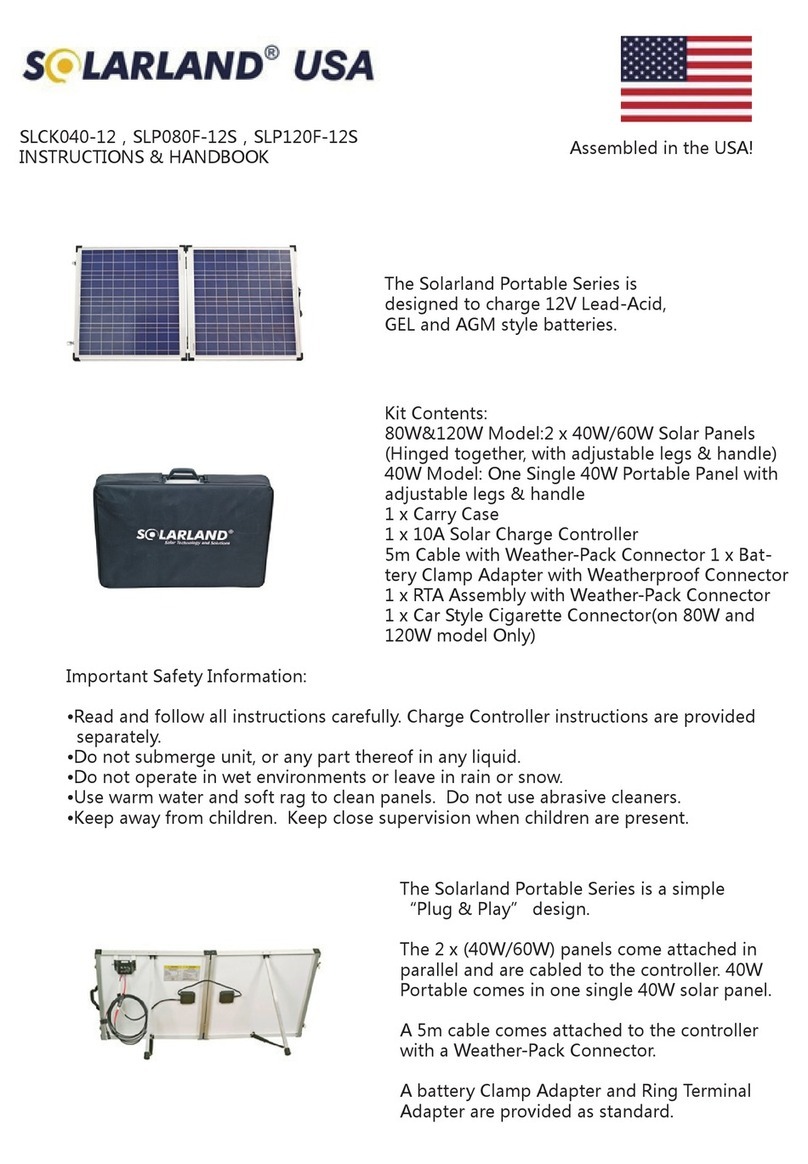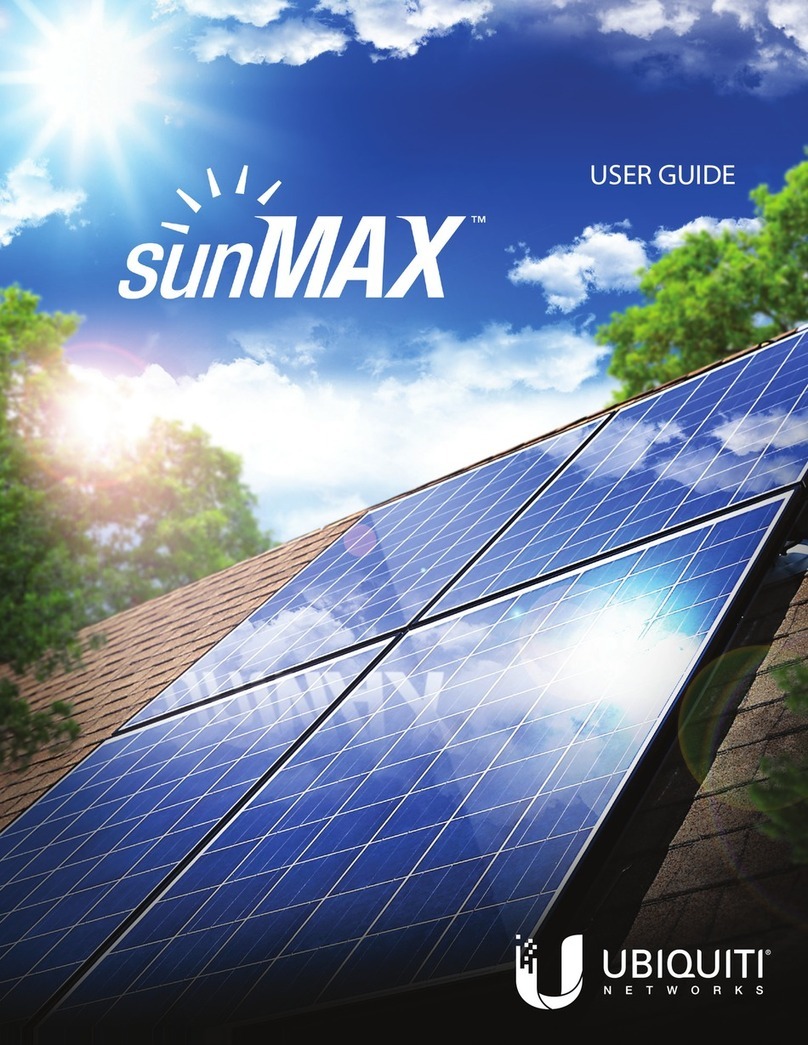
1. Introduction
Solar panels convert light energy to electricity, or specifically to direct current. The direct current
produced is used to provide power to a system and to charge storage batteries. Solar panels
operate in both direct and diffuse light, but not at night.
Each solar panel includes a 2-wire cable to attach the panel to a voltage regulator. The regulator
and a rechargeable battery are purchased separately from the solar panel.
The SP5 and SP10 have an output level that allows them to be connected directly to the CHG+
and CHG– terminals on the CR300-series data loggers. The SP5, SP10, and SP20 can all be
connected directly to the CHG+ and CHG– terminals on the CR6. The data logger will then
charge a 12 VDC battery attached to the BAT+ and BAT– terminals on the data logger.
The SP10 10-watt and SP20 20-watt solar panels are intended to recharge the storage batteries
incorporated in the PS200, PS150, and CR3000, as well as the BP12 and BP24 battery packs. A
CH201, CH200, or CH150 is also required when recharging a BP12 or BP24.
The SP10 and SP20 have two wires stripped and tinned to attach to the charging terminals on the
GRANITE6, CR6, CH201, CH200, PS200, CH150, or PS150. Refer to the product documentation to
determine which terminals are used to attach the solar panel.
2. Specifications
SP5 SP10 SP20
Maximum peak power (Pp): 4.5 W 10 W 20 W
Voltage at peak power (Vpp) (voltage from solar
panel before regulator): 16.5 V 16.8 V 16.8 V
Current at peak power (Ipp): 0.27 A 0.59 A 1.19 A
Temperature coefficent (Voc): –0.45%/°C –0.37%/°C –0.38%/°C
Solar panel wire gauge: 20AWG 20AWG 20AWG
Length: 25.1 cm
(9.8 in)
41.9 cm
(16.5 in)
50.0 cm
(19.7 in)
SP5, SP10, and SP20 Solar Panels 1
